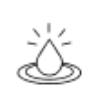Getting Out of Your Head & Into Sync With Nature
Many of us feel a deep intuition, something we sense in our bones, that the cycles of nature exist at all scales, great and small.
In our hyper-productive, head-centered culture, wellbeing often starts with paying attention to how these cycles affect our bodies, our lives, and our communities. Honoring the passing of cyclical time — slowing down to reflect and respond to what our world and our bodies are telling us — is an essential part of preserving our humanity.
And the Winter Solstice can remind us to nourish ourselves — to take the time to rest, regenerate, and replenish our stores of energy, in preparation for the time when the earth bursts into bloom again.
Active Dormancy
Wintertime can look less energetic than spring or summer. Even in some temperate climates, where the weather stays warm and sunny year-round, you still won’t see as much obvious growth in the natural world – no burgeoning leaves, no budding flowers, no nests full of new life.
But there’s a lot going on under the surface. Autumn leaves rot to enrich the soil. Animals hibernate in preparation for springtime hunting and foraging. (Bears, world champions of hibernation, actually give birth to their cubs while they’re denned up for winter.) Snowpack grows to feed rivers and streams, and so forth.
People have used nature as a metaphor since ancient times, and in modern times, we still can.
Embracing Regenerative Stillness
In the modern world, we’re surrounded by messages that we ought to live in a kind of perpetual summer – constantly in motion, constantly active, “being productive”, foregoing quality rest and time to ourselves until we have no choice but to collapse.
This is a cruel way to live. No living thing on earth is active and productive all the time. And worse, we don’t get good rest when we work ourselves to exhaustion. We’re still stressed, still preoccupied, and we might resort to unhealthy coping mechanisms to numb out.
Instead of “resting” like a modern human who’s stuck on the productivity treadmill, consider another approach – modeled on the wisdom of the natural world.
How to Rest Like Winter
It must be said that far too many people have no choice about working themselves to the bone. Wages haven’t caught up to cost of living increases. The covid-19 pandemic has enabled widespread economic crises that jeopardized survival for too many. “Take time for yourself” can seem like a sick joke when you’re running between your second and third job, trying to keep up with the gas bill.
So if you ARE able to survive and thrive while implementing these tips, remember that this is a season for gratitude as well.
Set reality-based boundaries.
Ask yourself – “do I really need to do all these things I’ve told myself I have to do?” Taking on extra responsibilities at work, shouldering more than your fair share of household chores, accepting social invitations that leave you drained instead of renewed – many of us live in a storm of Shoulds and Have-Tos that actually aren’t.
Take a quiet, uninterrupted hour and write down those Shoulds without judgment. Then consider whether you have to do them at all. Will the sky fall if you don’t personally cater the school play wrap party, or spend an hour on the phone with that friend who never asks how you are? Probably not! And crossing things off a list can be as purifying as new snow.
Build Nothing into your schedule.
When plotting out your time commitments, really internalize the idea that, like all animals, plants and the earth itself, you need time for rest. It’s just as important as eating and hunting. Commit to defending your downtime like you would a meeting with your boss. Call it “hibernation time” if you like, and you don’t have to justify or explain it to anyone. Bears certainly don’t.
Putting hibernation time on a schedule accomplishes two things: it gives you something to look forward to, and the people who depend on you something to work around. If they’re used to total access to your time and effort, there will be an adjustment period. Just remember… you’re a bear.
Keep your blood (or sap) moving.
Sugar maple sap, the blood of the tree, begins to rise in the darkest days of late winter. And if you’ve ever seen wild animals frolicking in the snow – even if only on TV – you’ll know how important movement is to energetic dormancy.
By now, everyone knows exercise is excellent for combating stress and anxiety. It boosts production of endorphins, the brain's natural feel-good chemicals, and improves sleep, which helps you face the day bright-eyed and bushy-tailed.
Try to get your exercise outdoors if you can – being in nature, getting some vitamin D and breathing in a little healthy decay can help re-ground you in the wild world.
Eat for the season.
Not necessarily gorging on the huge bowls of red, green and silver-wrapped candy that seem to appear everywhere the day after Halloween, either. For many years, humans have known that balanced nutrition is vital to health and wellbeing. But what you may not know is that seasonal foods can cue you to your body’s needs and the cycles of the earth.
No hothouse tomatoes or summer strawberries from halfway around the world for you in December. They’re unlikely to be delicious, while the products of local soil will be – like root vegetables, leafy greens, apples and pears still sharp and juicy from the fall. Do some research about your local bounty and let Nature plan the menu.
Hibernation for two. (Or you!)
Physical pleasure and intimacy are real human needs, akin to our needs for food, shelter and rest. They’re that important, but when we’re stressed out and overextended, our sex lives are often the first place we cut corners.
This is a mistake. Pleasure feeds the soul, and intimacy fuels more intimacy and the human connection we need to be well-resourced – even if our partner is us. And wintertime is the perfect time for slow sex – cozy, unhurried, radically comfortable and blissfully goal-free.
It’s also a potent time to tune into our deepest desires, to rekindle our relationship with our bodies and our minds, re-learn how to cultivate deeper intimacy, presence, and gratitude for the small and simple gifts. These are all medicine for our nervous systems and our hearts alike.
Bears don’t make love in their dens – but if they did, that’s what you’re going for.
Weaving the Fabric of Wellness, Life, and Light
This holy-day reminds us of the vivid necessity of genuine human connection — between us and our families (both our families of origin and our chosen families), between us and our wider communities, between our present moment and the cycles of deep time, and between us and the eternal pulse of Life in the earth itself.
When times are dark — literally, metaphorically, or both — the spark of the sun in midwinter can remind us of the possibility of hope, comfort, and joy to come. It’s a time to rest, rejoice, and reflect on the inevitability of change and the possibility of renewal.
Even when the nights are so long and cold, there’s always a light to be seen.
Want more? Sign up for our newsletter
By entering your email, you are agreeing to our terms and conditions and understand our privacy policy.









